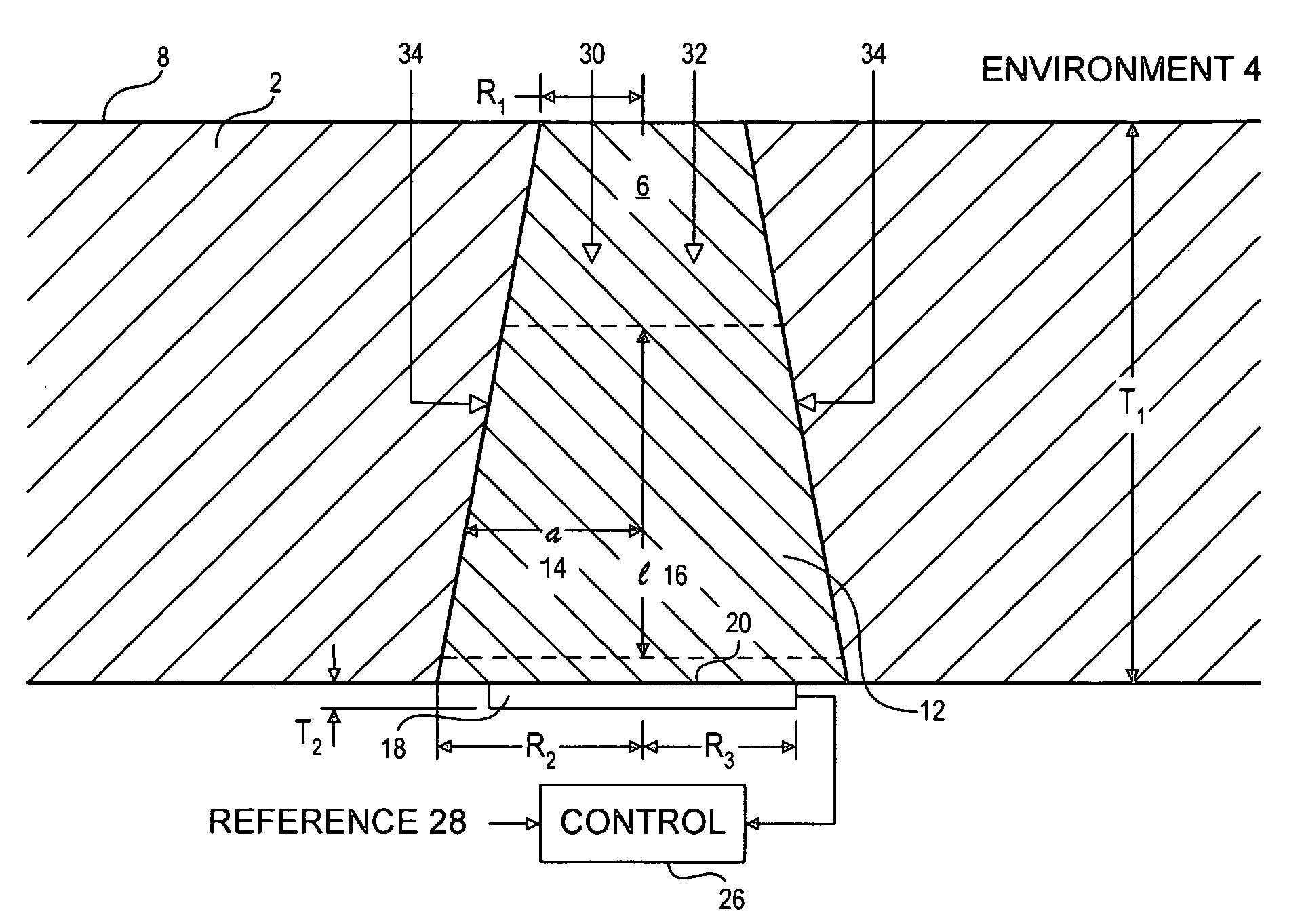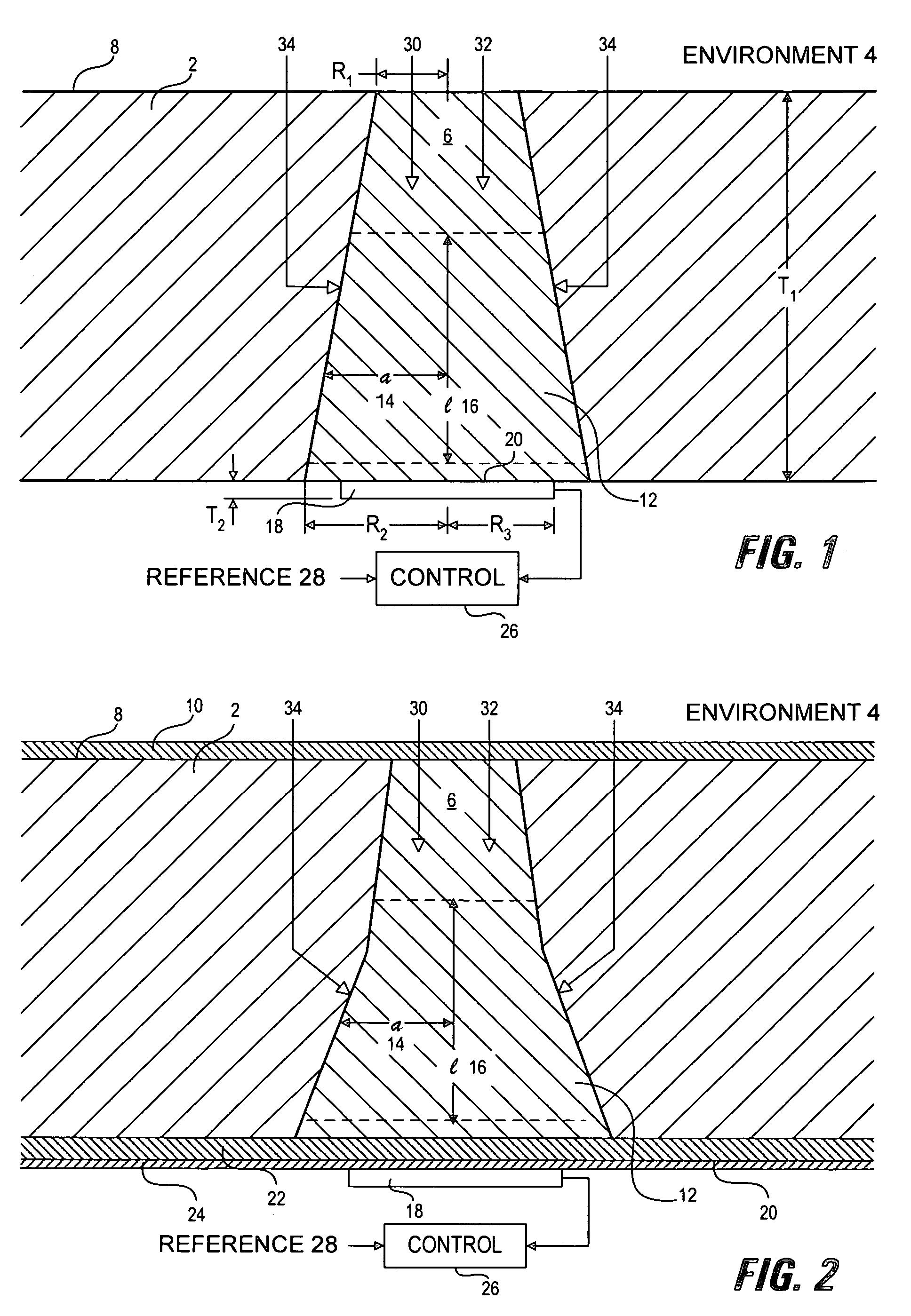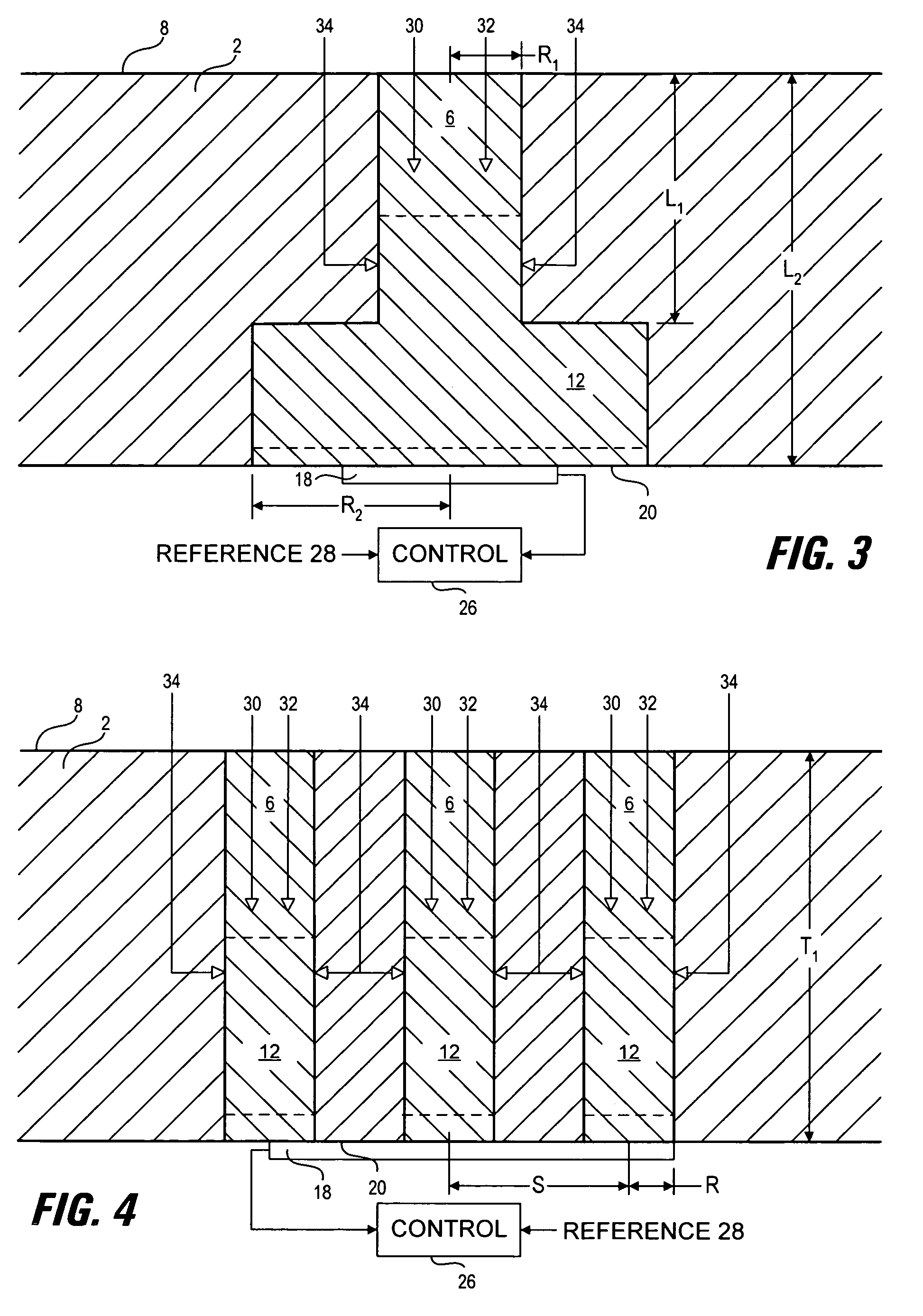Membrane and electrode structure for implantable sensor
a sensor and membrane technology, applied in the field of biological measurement device design and use, can solve the problems of reducing the lifetime of the sensor, limiting the effectiveness of certain devices for implantation, and unavoidable peroxide-mediated enzyme inactivation
- Summary
- Abstract
- Description
- Claims
- Application Information
AI Technical Summary
Benefits of technology
Problems solved by technology
Method used
Image
Examples
example 1
[0051]Sensor membranes were produced by filling the cavities in perforated silicone rubber sheets with a glucose oxidase / albumin mixture and crosslinking the mixture with glutaraldehyde using the method described in Armour et al. 1990, incorporated herein by reference.
[0052]The membranes were mounted over a membrane-covered electrochemical oxygen sensor, with a circular platinum working electrode of diameter 0.005″, formed on an alumina ceramic substrate using conventional thick-film methods. The required counter electrode was platinum and the required reference electrode was silver-plated platinum.
[0053]The devices were connected to a potentiostat circuit, and the working electrode was polarized at −500 mV with respect to the reference electrode. (see for example: Bard and Faulkner, 2000).
[0054]Tests were conducted in a simulated biological environment: phosphate-buffered saline, at 37° C., equilibrated with known oxygen concentrations. Known quantities of glucose were added to the...
example 2
[0059]Sensor membranes were produced by filling the cavities in perforated silicone rubber sheets with a glucose oxidase / albumin mixture and crosslinking the mixture with glutaraldehyde using the method described in Armour et al. 1990, incorporated herein by reference. The membranes were mounted over a membrane-covered electrochemical oxygen sensor, with a rectangular platinum working electrode of dimensions 0.025″ (inches)×0.2″, formed on an alumina ceramic substrate using conventional thick-film methods. The required counter electrode was platinum and the required reference electrode was silver-plated platinum.
[0060]The devices were connected to a potentiostat circuit, and the working electrode was polarized at −500 mV with respect to the reference electrode, following well-known methods (see for example: Bard and Faulkner, 2000).
[0061]Tests were conducted in a simulated biological environment: phosphate-buffered saline, at 37° C., equilibrated with known oxygen concentrations. Kn...
example 3
[0066]Optimization of hydrophilic region shape and size was carried out using computer modeling methods. The analysis is based on the modeling of diffusion and reaction of glucose and oxygen in the presence of glucose oxidase and catalase within the hydrophilic region. The chemical reaction can be summarized as follows:
[0067]
[0068]Computer models of operating devices were constructed using conventional methods (see for example: Jablecki and Gough, 2000, incorporated herein by reference) to calculate the response of an oxygen sensor, in communication with one or more hydrophilic regions, to environmental glucose and oxygen concentrations for various membrane constructions. In these analyses, the electrode current is calculated and shown as ig / lo, which is the ratio of the glucose-modulated oxygen current to the current in the absence of glucose (see e.g. Armour, et al 1990). This normalized current equals zero in the absence of glucose and rises to a maximum value of unity as glucose...
PUM
 Login to View More
Login to View More Abstract
Description
Claims
Application Information
 Login to View More
Login to View More - R&D
- Intellectual Property
- Life Sciences
- Materials
- Tech Scout
- Unparalleled Data Quality
- Higher Quality Content
- 60% Fewer Hallucinations
Browse by: Latest US Patents, China's latest patents, Technical Efficacy Thesaurus, Application Domain, Technology Topic, Popular Technical Reports.
© 2025 PatSnap. All rights reserved.Legal|Privacy policy|Modern Slavery Act Transparency Statement|Sitemap|About US| Contact US: help@patsnap.com



